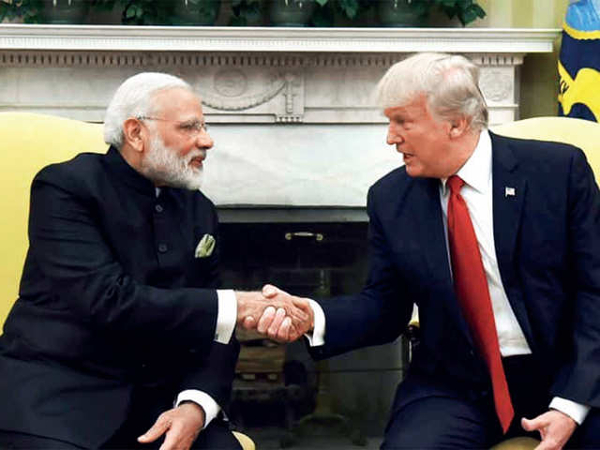The last high-level engagement between New Delhi and Donald Trump’s administration before the November 3 presidential elections in America is likely to see India and the United States signing an agreement for sharing of geospatial intelligence between the armed forces of the two nations.
External Affairs Minister S Jaishankar and Defence Minister Rajnath Singh are likely to hold the third India-America 2+2 dialogue with their US counterparts, Mike Pompeo and Mark T Esper, next month. Though the first and second rounds of the annual dialogue were held in New Delhi and Washington DC in 2018 and 2019 respectively, the third one may be held virtually due to the pandemic.
The forthcoming 2+2 dialogue is likely to see New Delhi and Washington DC consolidating strategic convergence in Indo-Pacific amid China’s growing belligerence, not only along its disputed boundary with India, but also in the South China Sea, East China Sea, Taiwan Strait and elsewhere in the region.
On the side-line of the talks Jaishankar and Singh will hold with Pompeo and Esper, the two sides are likely to sign the Basic Exchange and Cooperation Agreement (BECA), which will enable the exchange of geospatial information between the two countries, enhancing the operational efficiency of the US platforms currently being operated by India, sources in New Delhi said.
The proposed agreement between the National Geospatial-Intelligence Agency of the US Department of Defence and the Ministry of Defence of the Government of India will pave the way for sharing of maps, charts, imagery and other geospatial information and data, including geodetic, geophysical, geomagnetic and gravity data.
The BECA is going to be last of the four “foundational pacts”, which Washington DC has since long been nudging New Delhi to sign, promising that they would make it easier for India to access advanced military technologies from the US, thus paving the way for further strengthening defence partnership between the two nations.
The first such pact India signed with the US was the Logistics Exchange Memorandum of Agreement or the LEMOA. It was inked in 2016 and made it obligatory for both India and the US to support each other’s aircraft, ships and personnel with logistics, fuel and spares.
The Communications Compatibility and Security Agreement (COMCASA) was signed on the side-line of the first India-US 2+2 dialogue in New Delhi in September 2018. It facilitated India’s access to advanced defence systems of the US. It also enabled India to optimally utilise its existing military hardware sourced from the US.
The Industrial Security Annex (ISA) was signed during the second 2+2 dialogue in December 2019 to be added to the already existing General Security of Military Information Agreement (GSOMIA). The ISA provided a framework for exchange and protection of classified military information between the US and Indian industries to elevate the defence relations from the seller-buyer level to the level of joint research and development and joint production.
Source: Deccan Herald
You may also like
-
IAF Aircraft Set Course For Exercise Eastern Bridge VII At Oman
-
India-us Working Together In Areas Like Critical Minerals, Supply Chains And Advanced Technologies: Shri Piyush Goyal
-
Defence Secretary to co-chair 5th India-Philippines Joint Defence Cooperation Committee meeting in Manila
-
2nd India-Japan Finance Dialogue held in Tokyo on 6th September, 2024
-
Prime Minister, Shri Narendra Modi welcomes Crown Prince of Abu Dhabi
